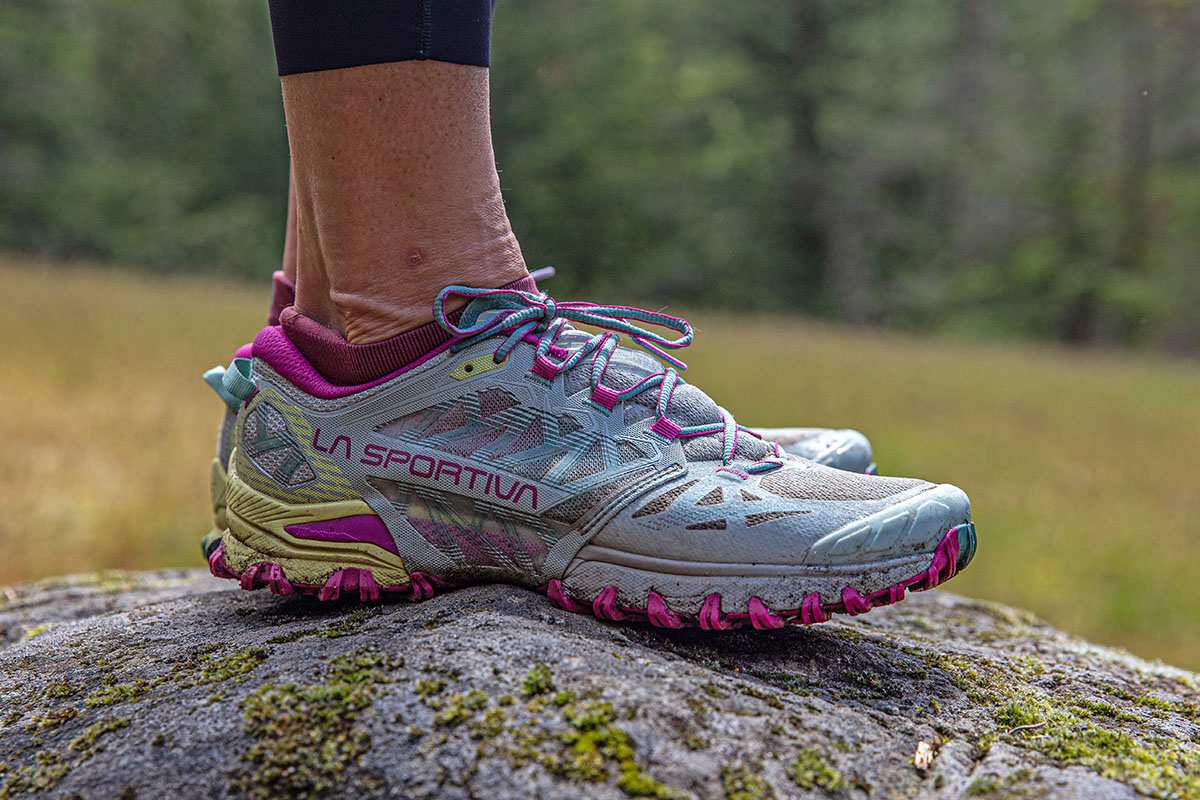
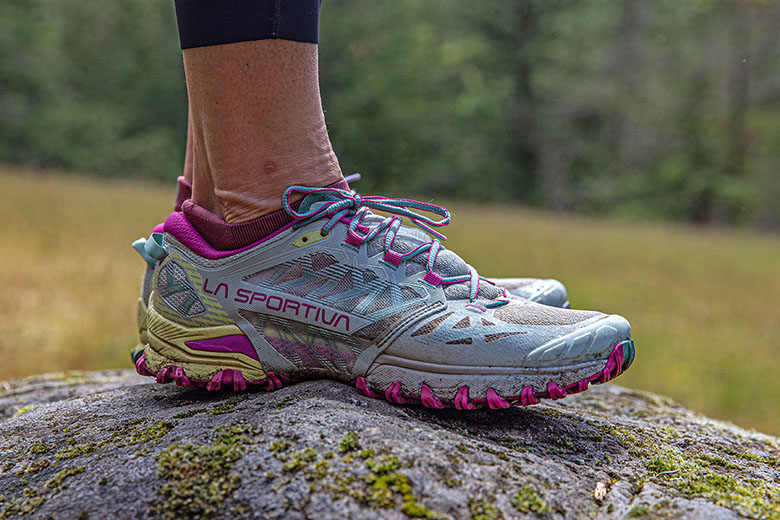
Price: $145
Weight: 1 lb. 4 oz. (women’s size 40.5)
Cushioning: Light/moderate
Drop: 6mm
What we like: One of the most capable trail runners for highly technical terrain.
What we don’t: Too stiff and under-cushioned for tame trails and pavement.
See the Women's Bushido III See the Men's Bushido III
La Sportiva is a technical specialist with a competitive lineup of mountain-ready shoes and boots that excel on challenging terrain. A longtime favorite of mine, their Bushido trail runner does a great job showcasing the brand’s expertise with standout grip, excellent support, and great precision for navigating tricky surfaces. After testing the latest III on demanding runs on Vancouver Island, I’m happy to report that the shoe is just as fast-moving and confidence-inspiring as its predecessors, but with upgrades in breathability and sustainability. Below I outline my experiences with the Bushido III. To see how it stacks up to the competition, check out our article on the best trail running shoes.
For road running shoes, I typically prioritize comfort above all else—pavement is predictable, and foot strike remains similar step after step. However, for trail runners that I take on rough and rocky terrain, I place a big emphasis on traction and stability, and I'm happy to report that the La Sportiva Bushido III excels in both departments. Starting with traction, the Bushido performed similarly to its predecessor: Its FriXion rubber outsole is extremely tacky whether ascending or descending and regardless of the quality of the trail. In practice, I found it deftly conquered everything from dirt to mud to slippery rocks and roots. It’s worth noting that La Sportiva did make some changes to the outsole during their most recent update, decreasing lug depth by 0.5 millimeters and tweaking the pattern slightly, but again, I haven’t noticed a difference between the II and III, which is a good thing.
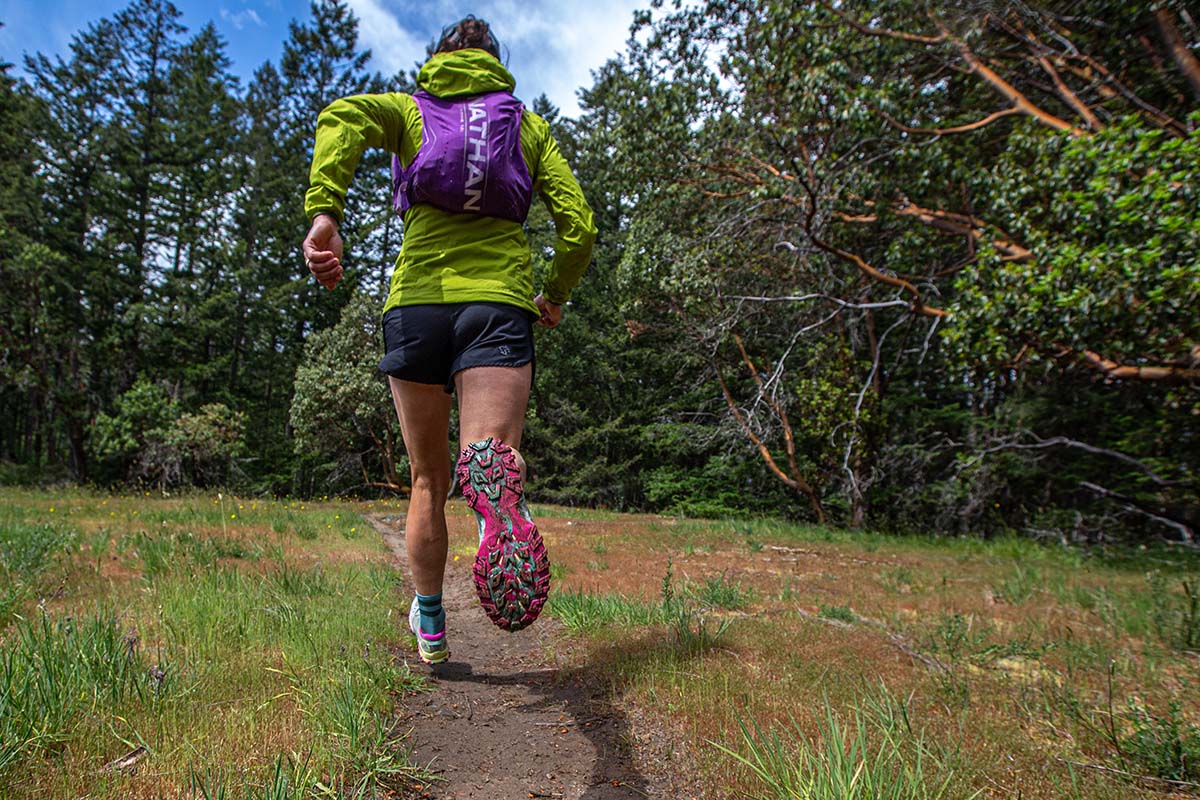
Throughout the Bushido III’s testing, I've felt noticeably connected to the ground—enough so that I trust the shoes enough to hurtle down technical trails without any hesitation. Further, the multi-directional, wraparound lugs confidently grip steep sections and tight corners, allowing me to run as aggressively as I want (I'm more often limited by my own fitness than the shoe's capabilities). I should note, however, that it does take some time to adjust to the Bushido's extremely high level of traction. Since I'm very familiar with the design, I now trust the shoes enough to simply power through slick surfaces like slippery rocks, wet creek beds, and slimy roots, but expect a bit of a learning curve.
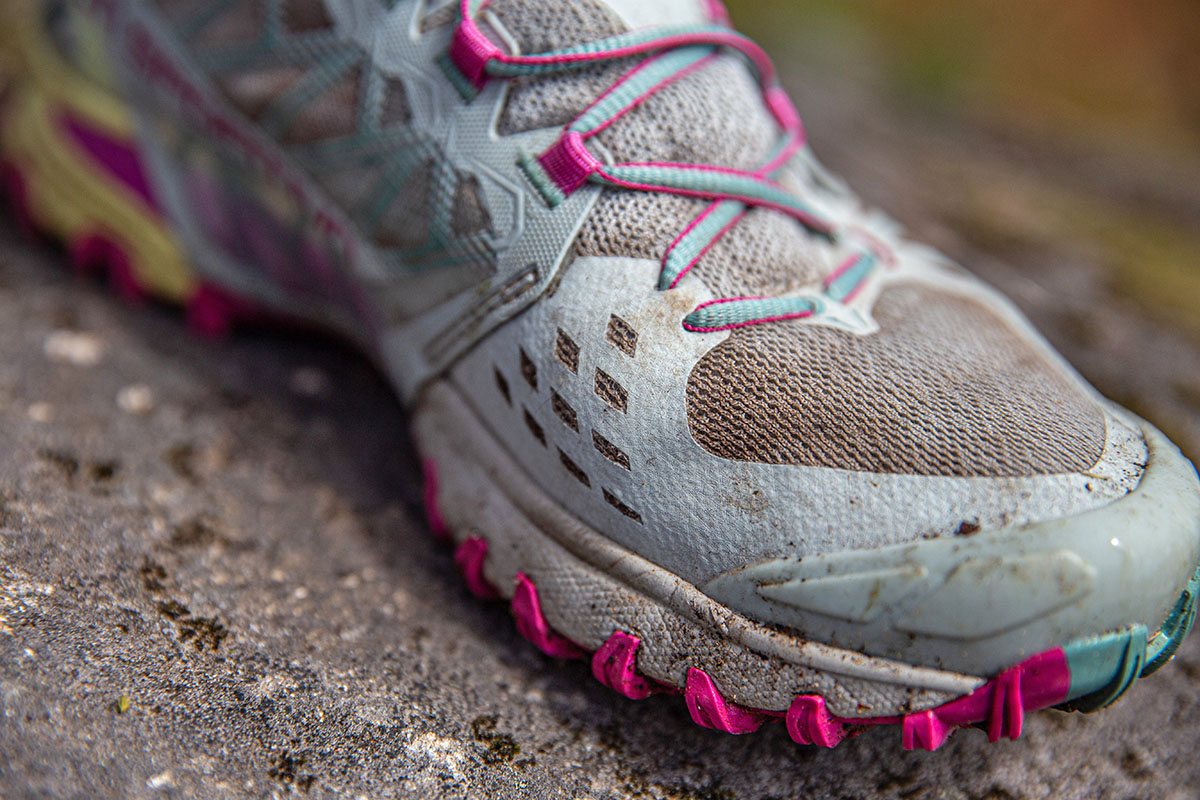
One of the La Sportiva Bushido III’s standout features is its supportive and extremely stable ride. The low-slung design and stiff construction allow it to power through rough sections of trail, and I’ve been especially impressed by the Bushido III’s confidence on off-camber surfaces and ankle-rolling terrain. The snug fit is another contributor, offering a connected feeling between my foot and the ground. Laced tightly, there’s no unwanted movement or sloppiness inside the shoe, which is great for maximizing precision. Added up, the Bushido is one of the most predictable and trustworthy trail runners I’ve tested to date.
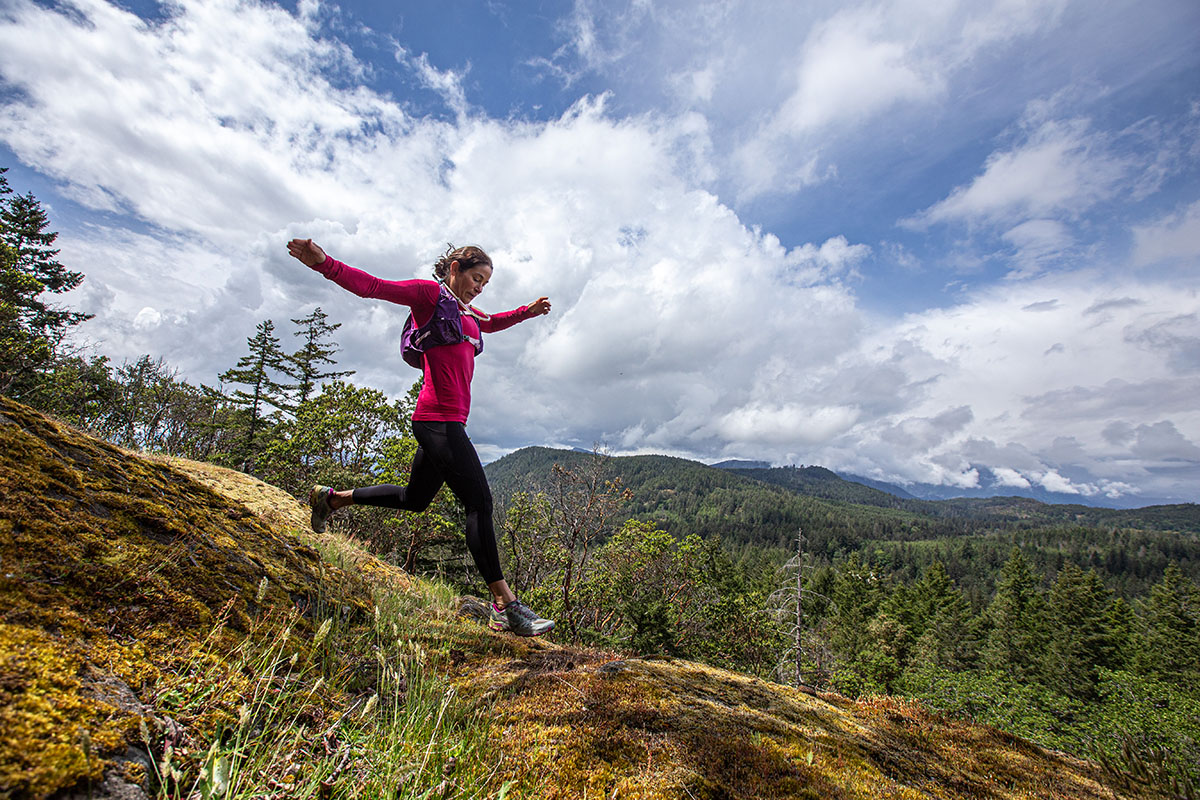
La Sportiva didn’t tweak the cushioning this time around, with the latest Bushido III featuring the same stack height and drop as its predecessor (19mm at the heel and 13mm at the forefoot). For reference, this is far less cushioning than what you get with many other rugged terrain-focused trail runners. For comparison, the Hoka Speedgoat 6 is heavily cushioned at 38 millimeters, while the Salomon’s Speedcross 6 sits at 32 millimeters (both measured at the heel). That said, I didn’t feel rocks and pebbles underfoot with the Bushido III, and I appreciated how the modest cushioning allowed me to feel connected to the trail without sacrificing comfort. In the end, it comes down to personal preference: Designs with less cushioning in the midsole are nimble and allow more precision while traveling over tricky terrain, while some runners might prefer the additional isolation of foam-heavy shoes.
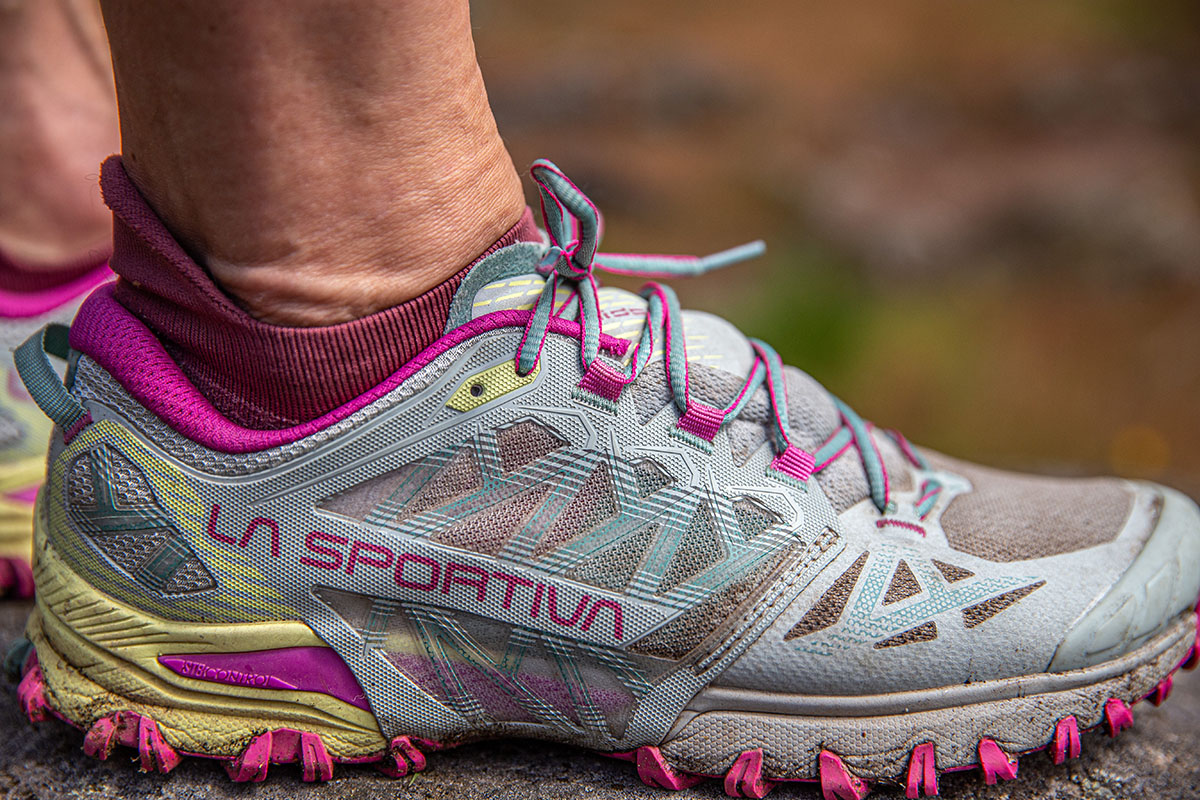
Given my positive experiences with past generations, I took the La Sportiva Bushido III out of the box and onto a 13-mile run. As expected, I experienced no slippage, hotspots, or comfort-related issues despite the lack of break-in period. The heel collar is notably shallow—meaning no pressure on my ankles or Achilles tendon—and can easily be paired with shorter socks, and there’s great protection both underfoot and at the front thanks to the EVA rock guard and TPU toe cap (respectively). Finally, despite their relatively low level of cushioning, I’ve found the Ortholite insole and compression-molded midsole strike a nice balance between comfort and performance. Added up, while the Bushido III wouldn’t be my first choice for a pavement-heavy race or even long outings on crushed gravel (they’re OK on my 1.2-mile commute on pavement to a local trailhead), they're a great match for extended trail runs on rockier terrain.
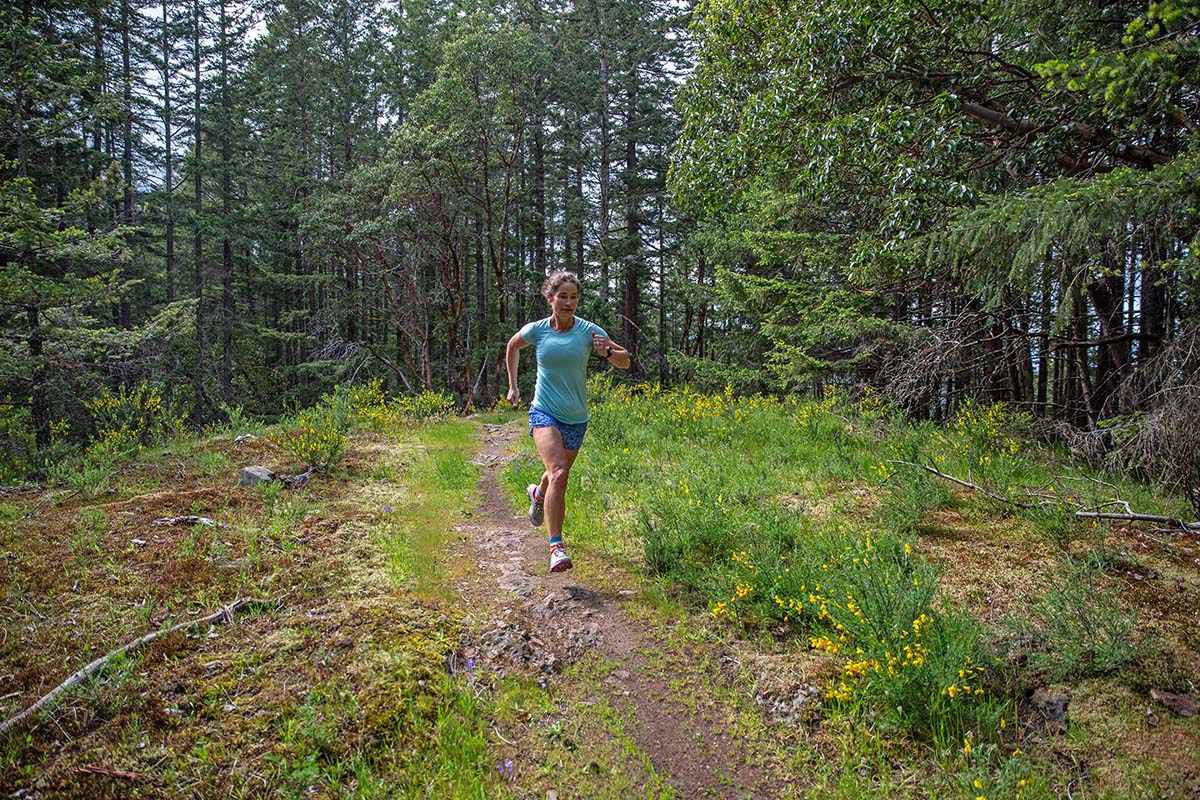
At 1 pound 1.6 ounces for the women’s pair (my shoes in a size 40.5 clocked in a little heavier on my scale at 1 lb. 4 oz.), the Bushido III is right in line with most of its direct competition. For comparison, the Saucony Peregrine 14 weighs around the same at 1 pound 1.1 ounces, the Hoka Speedgoat 6 comes in lighter at 1 pound 0.4 ounces, and Salomon’s similarly intentioned Speedcross 6 is 1 pound 6 ounces. It’s worth noting that past versions of the Bushido tended to grow heavy when wet and weren’t particularly quick to dry, but La Sportiva equipped the latest III with additional mesh inlays that provide a noticeable boost in breathability and shorten drainage time (without any major hits to durability, which we cover below).
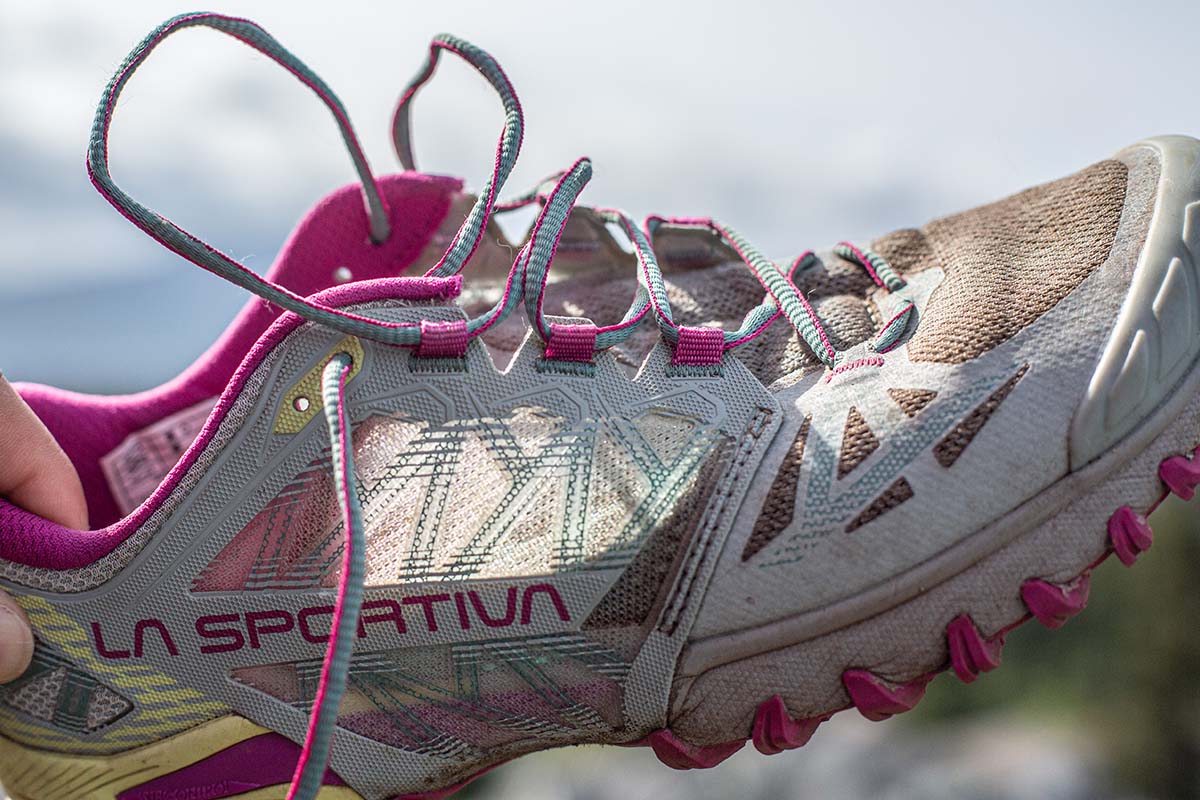
The Bushido III, like its predecessor, might appear a bit overkill on paper (and in person). The busy-looking upper is constructed using a microfiber overlay and welded ripstop fabric. And the front of the shoe gets a burly TPU toe cap to take the sting out of direct hits to rocks or roots. In practice, these materials add just enough structure and protection where it’s needed without sacrificing flexibility in the rest of the shoe. Further, the top and sides incorporate strategically placed panels of mesh for added breathability without compromising toughness. Overall, while noticeably stiffer than a standard trail running shoe, I appreciate the Bushido III’s hardy construction that’s truly built for rough handling—it’s one of the designs I’ve tested that reliably holds up to frequent use over the long term.
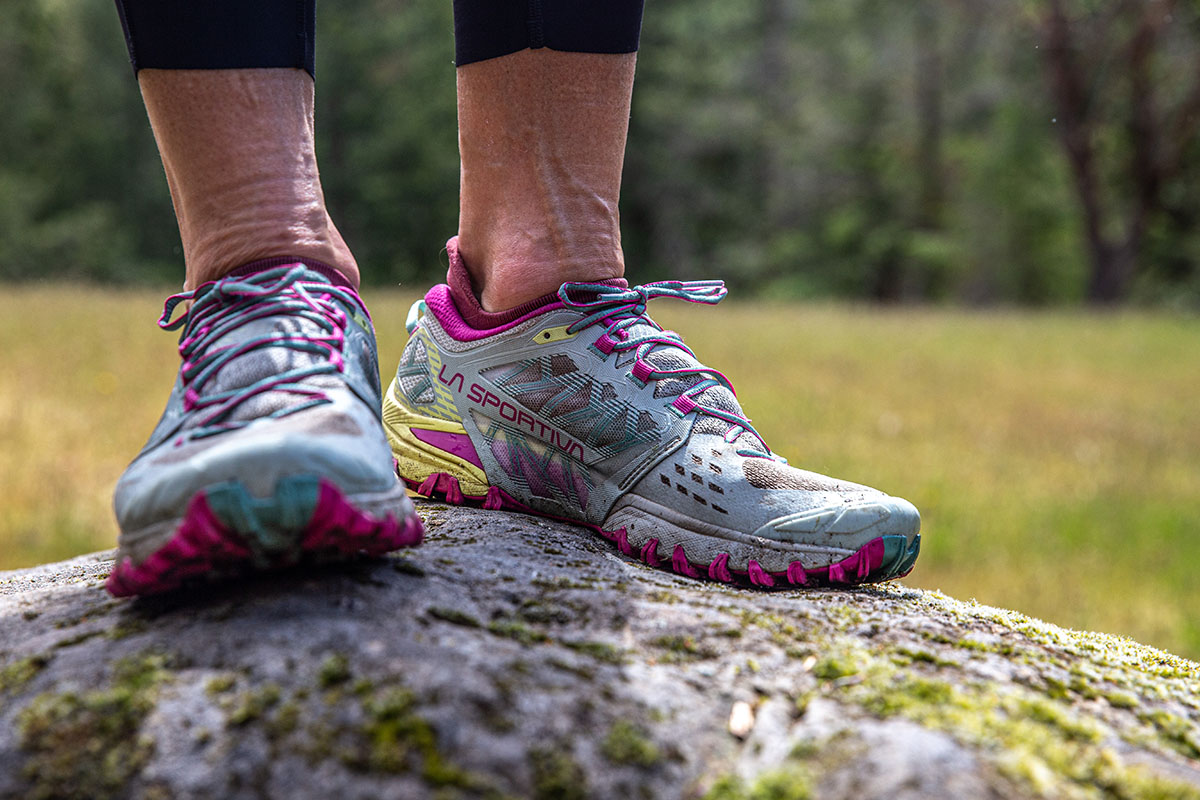
I loved the comfortable, snug fit of both the original Bushido and Bushido II, and the latest III is no different. The updated shoe features the same internal slip-on construction that wraps around my foot like a sock, with a pull tab at the back to make putting it on a little easier. As far as sizing goes, I chose my usual 40.5 (La Sportiva uses European sizing and equates this to a women’s U.S. 9), and it fit very well overall. Compared to the II, the III is a little longer and roomier in the toe box, but not enough so that it’s made a difference in precision (and I’ve certainly appreciated the slight boost in comfort). It’s also worth noting that the III’s laces stay securely in place throughout the day, which hasn’t been the case with past versions. And for those with high-volume feet, La Sportiva now offers dedicated wide sizes that feature an additional 7 millimeters of circumference and 2 millimeters of height in the toe box.
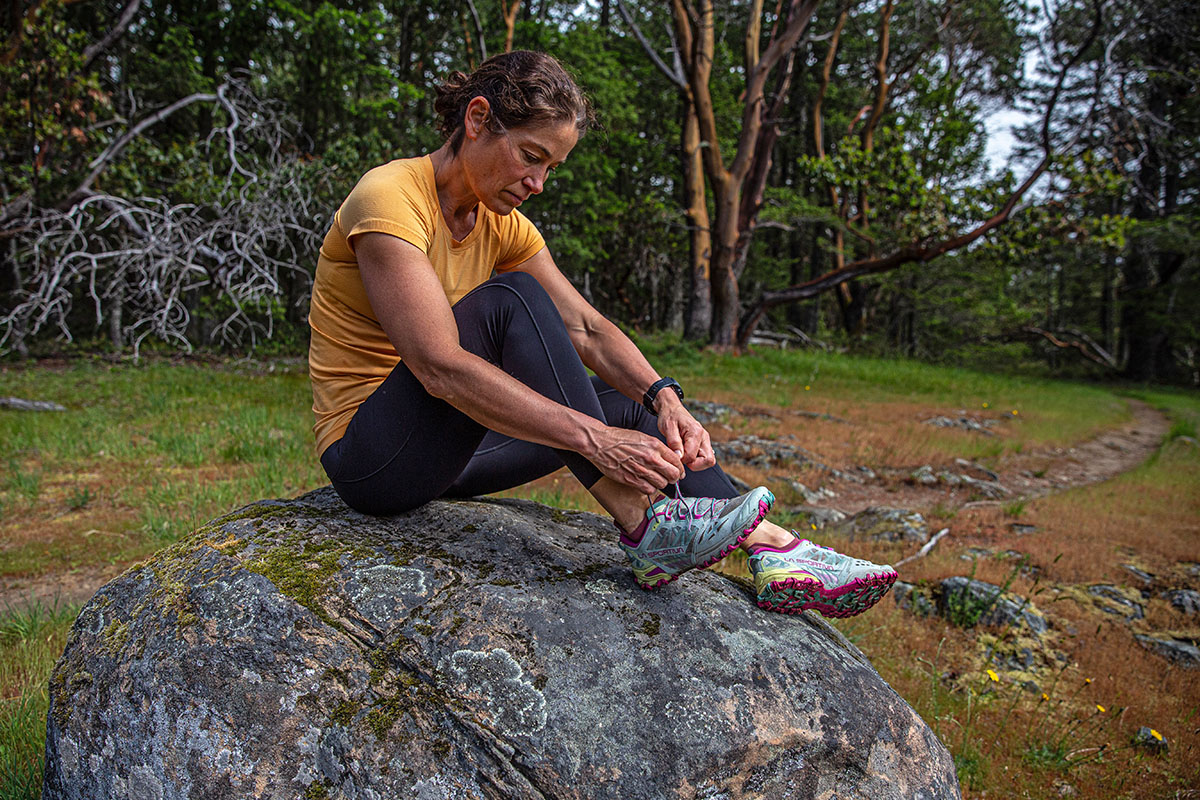
In addition to improved breathability, the latest Bushido III is more sustainably built than the prior-generation II, which we’re happy to see. Specifically, La Sportiva incorporated a recycled mesh lining at the heel, and the insole is made with 5% recycled rubber and 15% repurposed foam. The shoe is also made without the use of animal products, earning it a vegan designation. Added up, we appreciate La Sportiva’s upgrades to the design and think they only add to the shoe’s all-around appeal.
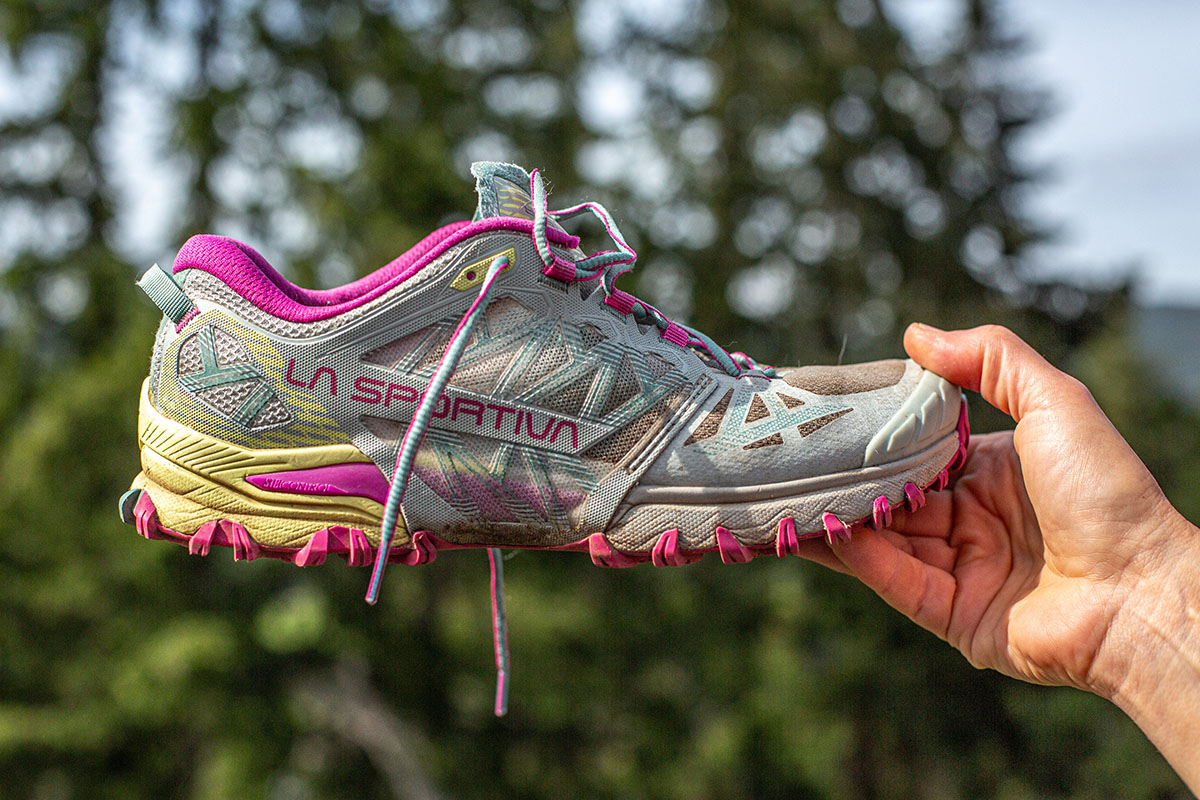
Our review above covers the women’s Bushido III, and it’s also sold in a men’s version for the same price. The two shoes are largely identical apart from colorway options and weight, with the men’s Bushido III checking in a few ounces heavier at 1 pound 5 ounces per pair. As we touched on above, both the men’s and women’s versions of the shoe are offered in dedicated wide sizes, as well as waterproof models that incorporate a Gore-Tex membrane for $20 more. In our experience, non-waterproof shoes are the better bet for most due to their superior breathability and faster drying time, but it ultimately comes down to your priorities and personal preference. For more on the topic, see our article: Do You Need Waterproof Hiking Shoes?
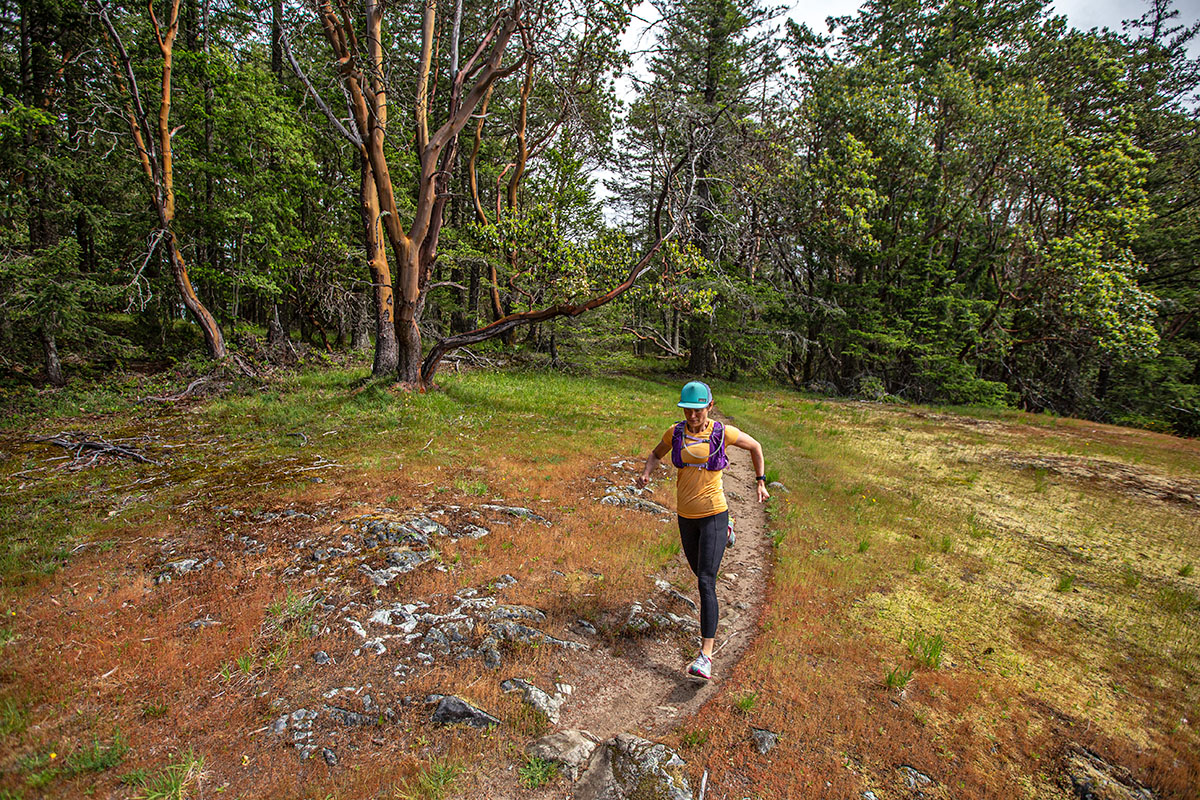
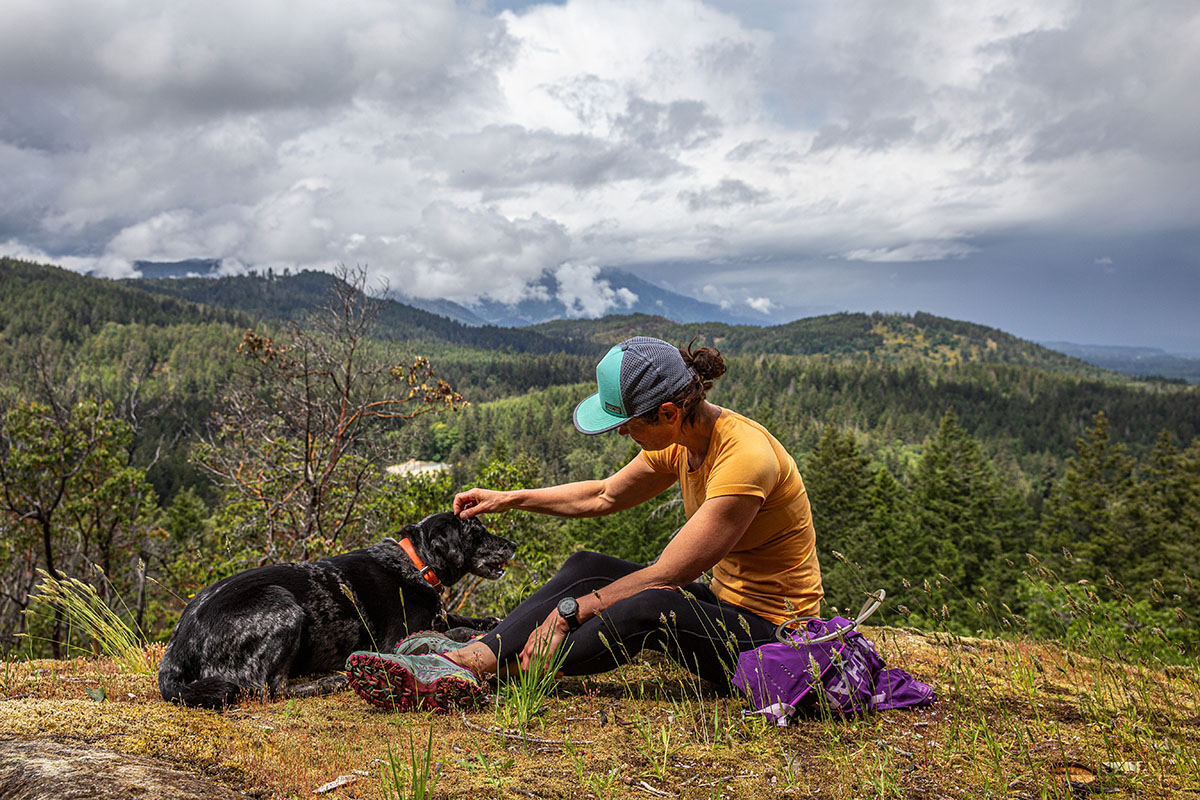
| Shoe | Price | Weight | Stack Height | Drop | Lugs |
|---|---|---|---|---|---|
| La Sportiva Bushido III | $145 | 1 lb. 1.6 oz. | 13mm forefoot / 19mm heel | 6mm | 4mm |
| La Sportiva Akasha II | $175 | 1 lb. 2.4 oz. | 25mm forefoot / 31mm heel | 6mm | 4.5mm |
| Salomon Sense Ride 5 | $140 | 1 lb. 1.8 oz. | 21.3mm forefoot / 29.6mm heel | 8.3mm | 3.5mm |
| Saucony Peregrine 14 | $140 | 1 lb. 1.1 oz. | 24mm forefoot / 28mm heel | 4mm | 5mm |
| Hoka Speedgoat 6 | $155 | 1 lb. 0.4 oz. | 33mm forefoot / 38mm heel | 5mm | 5mm |
| Salomon Speedcross 6 | $145 | 1 lb. 6.0 oz. | 22mm forefoot / 32mm heel | 10mm | 5mm |
The La Sportiva Bushido III is designed for rugged trails where roots, rocks, and steep sections are commonplace. In this category, there’s no shortage of technical trail runners to consider, one of which comes from within the brand’s own lineup: the Akasha II. For $30 more than the Bushido, the Akasha boasts additional padding underfoot (25mm at the toe and 31mm at the heel) for a cushier and more forgiving ride, along with slightly deeper (4.5mm) lugs for biting into soft surfaces like loose dirt and mud. However, unlike the Bushido, the Akasha’s tread doesn’t extend over the sides, which results in less grip when navigating off-camber terrain. The Akasha also omits a rock plate, checks in around an ounce heavier per pair, and doesn’t come in dedicated wide sizes or a waterproof version. Taken together, we consider the Bushido to be the more technically capable option, but the Akasha offers a more balanced ride for those willing to sacrifice a little off-trail performance.
For an even more on-trail-friendly build, we like Salomon’s Sense Ride 5. To be clear, the Salomon still is a capable companion for demanding outings with a moderate amount of cushioning, a tacky Contagrip rubber outsole, and a relatively durable and protective construction. The Bushido offers better grip and ground feel, but the Sense Ride’s less aggressive lug pattern and better cushioning underfoot make it the preferred option for covering long distances, especially over less rocky ground (for more, see our in-depth Sense Ride 5 review). All in all, we’d break it down as follows: The Sense Ride is the better pick for routes that combine both on- and off-trail travel, but the Bushido offers a step up in performance when the terrain turns decidedly rugged.
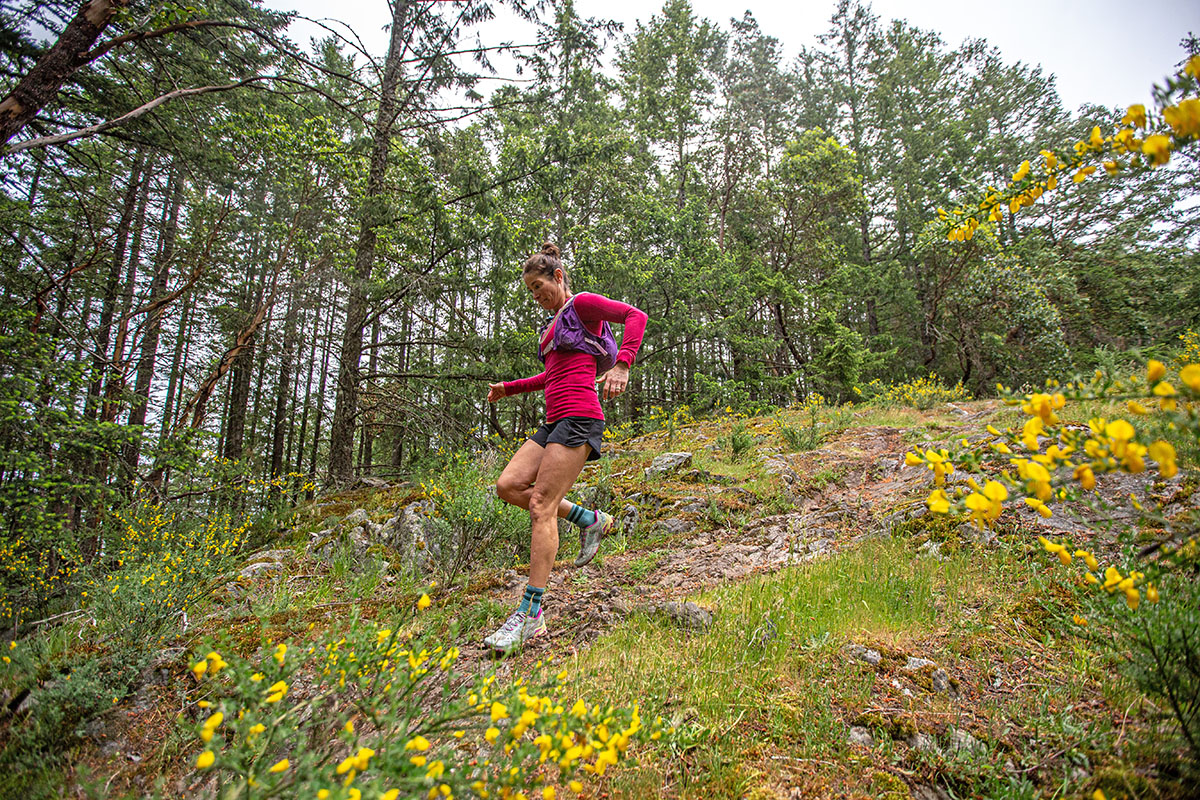
Saucony’s Peregrine has been another favorite of ours for multiple generations, and the latest “14” carries the torch. This shoe has great traction, ample cushioning, solid protection, and a competitively low weight (0.5 oz. lighter per pair than the Bushido). That said, despite its sharp lugs, the Peregrine 14 pales in comparison on rough terrain—its midsole is designed more for comfort and flexibility over long distances than stability on variable surfaces. For highly technical trails with steep climbs and descents over rocks and roots, the stiffer Bushido is our top pick. For tamer outings, the $5-cheaper Peregrine is a fine option.
As we touched on above, the Hoka Speedgoat 6 is another good alternative for rugged trails, but with much more cushioning than the Bushido III. At 1 pound 0.4 ounces, the Speedgoat 6 is also a bit lighter but doesn’t sacrifice much in the way of performance with an aggressive lug pattern, great traction, and an energetic feel. However, even though its thick midsole (33mm at the forefoot and 38mm at the heel) inspires a lot of confidence while running over roots and sharp rocks, it also results in less precise foot placements and more isolation from the ground. All told, we prefer the nimbler and more durable Bushido III on technical terrain, but for runners who like the added cushioning, the Hoka is a perfectly viable choice.
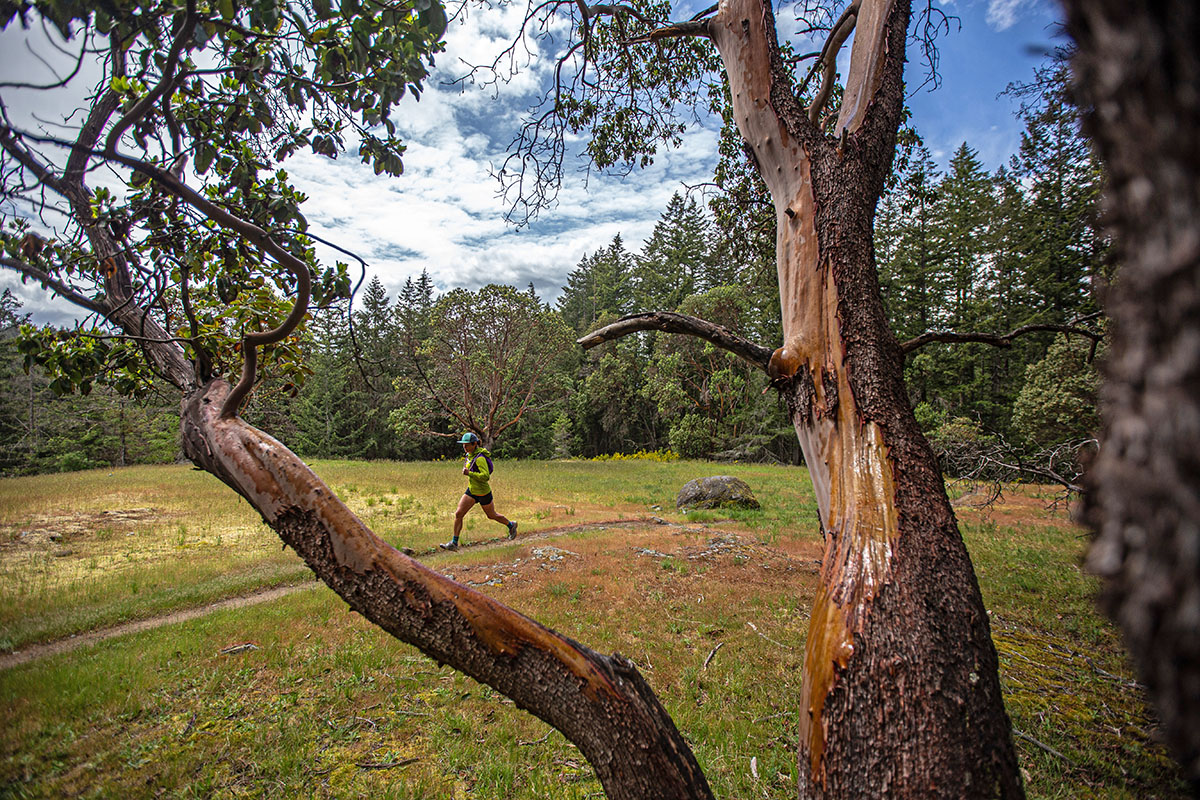
Last but not least, Salomon’s Speedcross 6 is a similarly aggressive shoe designed for gripping variable surfaces. What sets the Speedcross apart is its 5-millimeter arrow-shaped lugs, which provide excellent traction over soft ground like dirt, mud, and even snow. But the Bushido III gets the advantage in stability due to its lower stack height (by 9mm at the forefoot and 13mm at the heel), which feels much less prone to rolling over on trail obstacles. All in all, the Speedcross’ traction is undeniably impressive for those who spend a lot of time on wet trails, but for the same price, we think the Bushido is the better all-rounder.
If you’re thinking about buying gear that we’ve reviewed on Switchback Travel, you can help support us in the process. Just click on any of the seller links above, and if you make a purchase, we receive a small percentage of the transaction. The cost of the product is the same to you but this helps us continue to test and write about outdoor gear. Thanks and we appreciate your support!
Depending on the seller, most products ship free in the United States on orders of $50 or more. International shipping availability and rates vary by seller. The pricing information on this page is updated hourly but we are not responsible for inaccuracies.